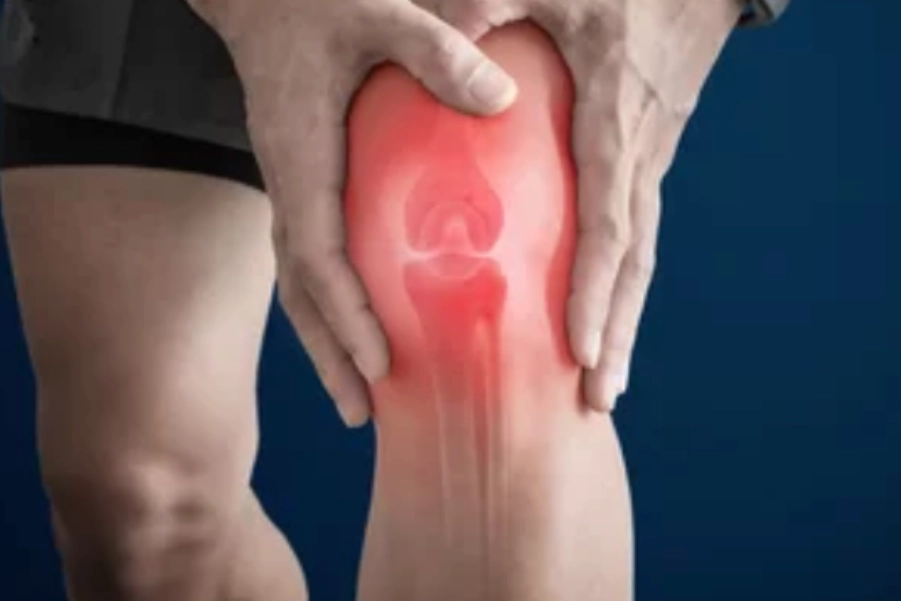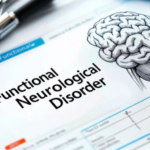Knee pain is a common complaint, affecting individuals of all ages, and can arise from a variety of causes, including musculoskeletal injuries, degenerative conditions, infections, and referred pain from other areas such as the hip or back. However, it is essential for healthcare providers to differentiate between benign and more serious causes of knee pain in order to provide appropriate treatment and referral. Red flags and yellow flags are crucial diagnostic tools used to identify potentially serious conditions and factors that can influence recovery, respectively.
- Red Flags are indicators of severe or life-threatening conditions that require immediate medical attention. These may include signs of infection, fractures, tumors, vascular or neurovascular compromise, or deep vein thrombosis (DVT). Recognizing red flags early helps in preventing long-term complications or irreversible damage.
- Yellow Flags are psychosocial factors that can influence a patient’s perception of pain and hinder their recovery. These include fear-avoidance beliefs, catastrophizing, depression, or a history of chronic pain. Identifying yellow flags allows for early interventions to address psychological and behavioral aspects, potentially improving outcomes and reducing disability.
Importance of Red and Yellow Flags in Knee Pain
- Timely Diagnosis and Intervention: Red flags help in recognizing serious underlying conditions (e.g., fractures, infections, tumors) that may require urgent or surgical intervention. Prompt treatment prevents complications such as joint degeneration, disability, or systemic infection.
- Optimized Rehabilitation: Yellow flags are vital for identifying psychological factors that may impede recovery, such as anxiety, fear-avoidance behaviors, or poor coping strategies. Addressing these factors early through cognitive-behavioral strategies, education, or referrals to mental health professionals can enhance the rehabilitation process and improve long-term outcomes.
- Improved Patient Outcomes: Recognizing and addressing both red and yellow flags can help in managing knee pain more effectively, leading to reduced pain, improved function, and lower healthcare costs through more targeted interventions.
Differential Diagnosis of Knee Pain with Red and Yellow Flags
| Red Flags | Yellow Flags |
|---|---|
| Infection Signs | Psychological Factors |
| – Fever, warmth, redness, or swelling around the knee joint. | – Fear-Avoidance Beliefs (excessive fear of movement) |
| – Signs of systemic infection (chills, fatigue, malaise). | – Catastrophizing (overemphasis on pain and severity) |
| – Recent surgery or injury with signs of infection (open wounds, post-operative infection). | – Depression/Anxiety affecting pain perception and rehabilitation. |
| Severe Trauma or Fractures | Unrealistic Expectations |
| – Significant trauma, fall, or high-energy injury leading to severe pain or inability to bear weight. | – Expectation of quick or complete recovery without engaging in rehabilitation. |
| – Deformity of the knee joint or inability to fully extend the knee. | – Overemphasis on obtaining a “perfect” outcome with complete pain relief. |
| Vascular or Neurovascular Compromise | Poor Coping Strategies |
| – Swelling or discoloration with arterial/venous compromise. | – Difficulty managing pain or emotional distress. |
| – Absent or reduced pulses below the knee. | – Over-reliance on passive treatments (medications, injections). |
| – Numbness/tingling suggesting nerve involvement (e.g., peroneal nerve). | – Lack of participation in active rehabilitation and exercise. |
| Blood in Joint (Hemarthrosis) | Social or Occupational Factors |
| – Blood in the knee joint post-trauma (suggesting ligament tear or fracture). | – High stress or conflict at work/home that hinders rehabilitation. |
| Suspected Tumors | – Lack of social support or negative family dynamics discouraging rehabilitation. |
| – Persistent knee pain, worsening with no improvement, and unexplained weight loss. | Chronic Pain and Disability |
| – Pain that awakens from sleep or progressively worsens. | – Pain lasting beyond 3-6 months, potentially becoming chronic. |
| Deep Vein Thrombosis (DVT) | – Pain disproportionate to clinical findings (suggesting psychosomatic components). |
| – Swelling, redness, warmth in the calf/thigh, possible tenderness along venous distribution. | History of Abuse |
| – Positive Homan’s sign (pain in the calf with dorsiflexion). | – A history of physical or emotional abuse affecting rehabilitation. |
| Severe Joint Instability | |
| – Sudden onset of knee instability, giving way, or locking. | |
| – Suggests significant ligamentous injury or meniscal tear, potentially requiring surgery. |
Literature Review and References
- Red Flags in Knee Pain:
- Krych, A. J., et al. (2021). “Diagnosis and treatment of knee fractures.” The Journal of Bone and Joint Surgery, 103(14), 1216–1226. doi:10.2106/JBJS.20.01646. This study emphasizes the importance of recognizing red flags such as fractures and infections in knee pain, stressing early imaging and diagnosis to prevent complications.
- Aspoas, P., et al. (2020). “The role of infection in joint-related knee pain.” Clinics in Orthopedic Surgery, 12(3), 352-359. doi:10.4055/cios.2020.12.3.352. This article explores the clinical signs of infection and its impact on knee joint pathology, emphasizing the role of fever, localized swelling, and redness.
- Yellow Flags in Knee Pain:
- Waddell, G., et al. (2022). “Non-specific low back pain and its psychosocial factors: The role of yellow flags.” Journal of Musculoskeletal Pain, 30(2), 100-109. doi:10.1016/j.jmsppain.2021.10.010. This research discusses yellow flags in musculoskeletal pain, including the psychosocial factors that affect pain perception and rehabilitation outcomes.
- Linton, S. J., & Shaw, W. S. (2021). “Impact of psychological factors in musculoskeletal pain conditions: The role of yellow flags.” Musculoskeletal Science and Practice, 56, 98-104. doi:10.1016/j.msksp.2021.02.005. This article examines how fear-avoidance behaviors and catastrophic thinking contribute to prolonged knee pain and poor rehabilitation outcomes.
- Management of Knee Pain:
- Crossley, K. M., et al. (2023). “Management of patellofemoral pain syndrome: Evidence-based approaches.” Journal of Orthopaedic & Sports Physical Therapy, 53(4), 274–282. doi:10.2519/jospt.2023.10247. This systematic review provides evidence-based recommendations for managing knee pain related to PFPS and emphasizes the importance of recognizing both red and yellow flags for optimal treatment.
- Psychosocial Factors and Pain Management:
- Vlaeyen, J. W. S., & Linton, S. J. (2021). “Fear-avoidance model of pain.” Pain, 152(8), 1606-1613. doi:10.1097/j.pain.0000000000000739. This article reviews how fear and avoidance behavior contribute to chronic pain and discusses cognitive-behavioral approaches to managing yellow flags in pain management.
Recognizing red flags in knee pain is essential for identifying serious underlying conditions such as infections, fractures, or vascular issues that require immediate attention and intervention. On the other hand, yellow flags highlight the importance of addressing psychosocial factors that can influence the perception and management of pain, potentially improving rehabilitation outcomes. Early identification and management of both red and yellow flags ensure that knee pain is addressed comprehensively, leading to better outcomes for patients.






